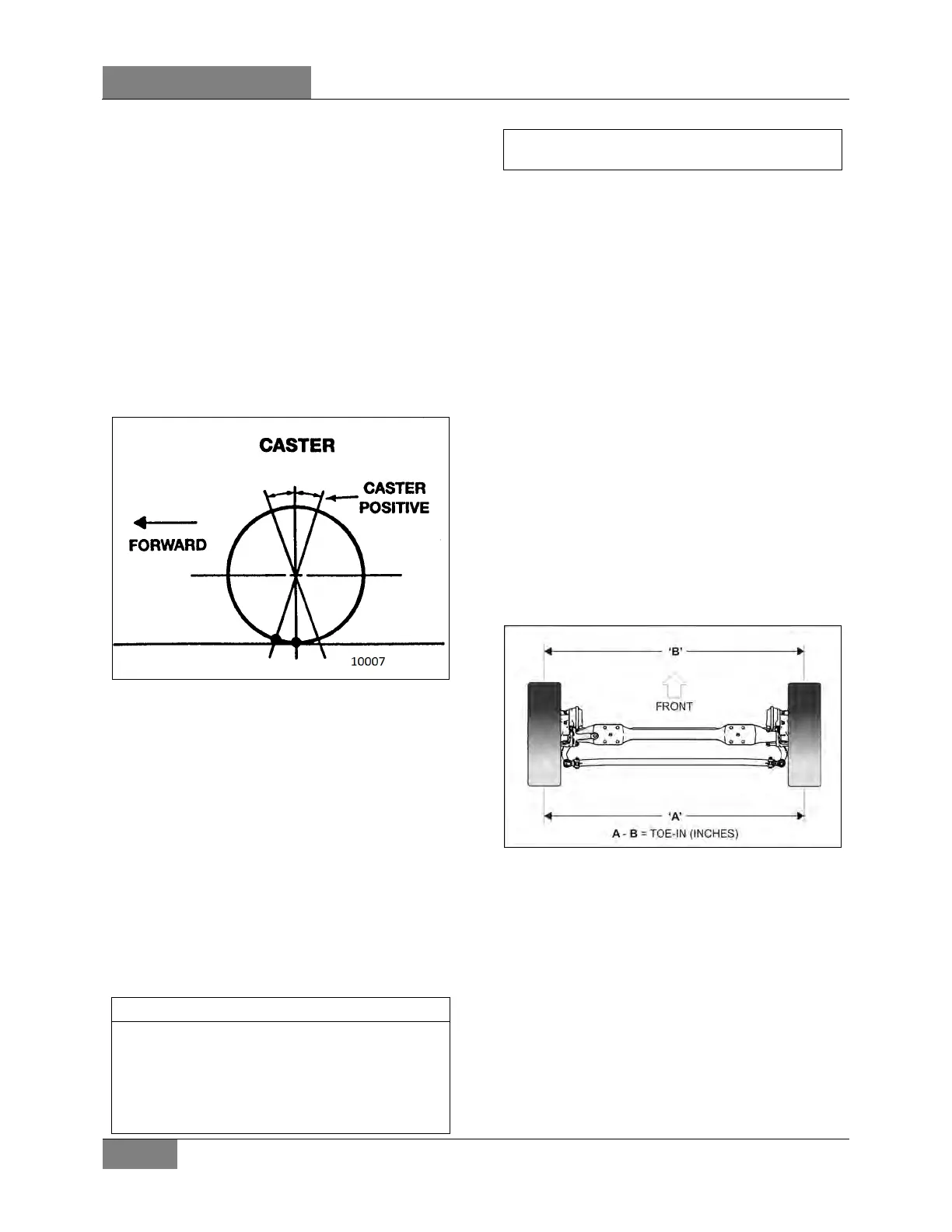DOB 1300-1556 | X3-45 Commuter PA-1648 Maintenance Manual First release Oct 2020
15.2.1 Front Axle Caster
Positive caster is the rearward tilt from the
vertical axis of the knuckle pin. Negative caster
is the forward tilt from the vertical axis of the
knuckle pin (Figure 39). This vehicle is designed
with a positive caster. The purpose of the caster
angle is to give a trailing effect. This results in
stabilized steering and a tendency for the
wheels to return to the straight-ahead position
after taking a turn.
Excessive caster results in hard steering around
corners. A shimmy may also develop when
returning to the straight ahead position (pulling
out of curves).
FIGURE 39: CASTER
Insufficient caster will cause wandering and
steering instability. Caster variations may be
caused by a bent axle, tilting or distortion of the
side suspension supports, damaged radius rod
bushings, or unequal tightening of the front and
rear suspension support bolts. Incorrect caster
must be corrected by replacing the damaged
suspension parts. A precision instrument should
be used to measure the caster.
The caster of this vehicle is factory set and is
not adjustable. However, if after replacing
damaged parts or in case of improper caster
due to irregular setting, the front axle caster
needs adjustment; it can be adjusted by
means of shims (Prevost #110663) on the
left-hand side upper radius rod support in
order to obtain minor adjustment.
15.3 FRONT WHEEL TOE-IN
Wheel toe-in is the degree (usually expressed in
fractions of an inch) where the forward part of
the vehicle front wheels are closer together than
the rear part, measured at wheel centerline
height with the wheels in the normal ‘’straight-
ahead’’ position of the steering gear.
Incorrect toe-in results in excessive tire wear
caused by side slippage and also steering
instability with a tendency to wander. Toe-in may
be measured from the center of tire tread or from
the inside of the tires. Take measurements at
both front and rear of axle (see ’’A” and ‘’B’’ in
Figure 40).
When setting toe-in adjustment, the front
suspension must be neutralized; that is, all
component parts must be in the same relative
position when making the adjustment as they
will be when in operation.
To neutralize the suspension, the vehicle must
be rolled forward, approximately ten feet.
FIGURE 40: TOE-IN MEASUREMENT
For toe-in specifications, refer to the FRONT
WHEEL ALIGNMENT SPECIFICATIONS table
in this section.
By rolling the vehicle forward, all tolerances in
the front suspension are taken up and the
suspension is then in its normal operating
position. Neutralizing the front suspension is
extremely important, especially if the vehicle has
been jacked up in order to mark the tires.
Otherwise, the front wheels will not return to
their normal operating position due to the tires
gripping the floor surface when the vehicle jack
is lowered.

